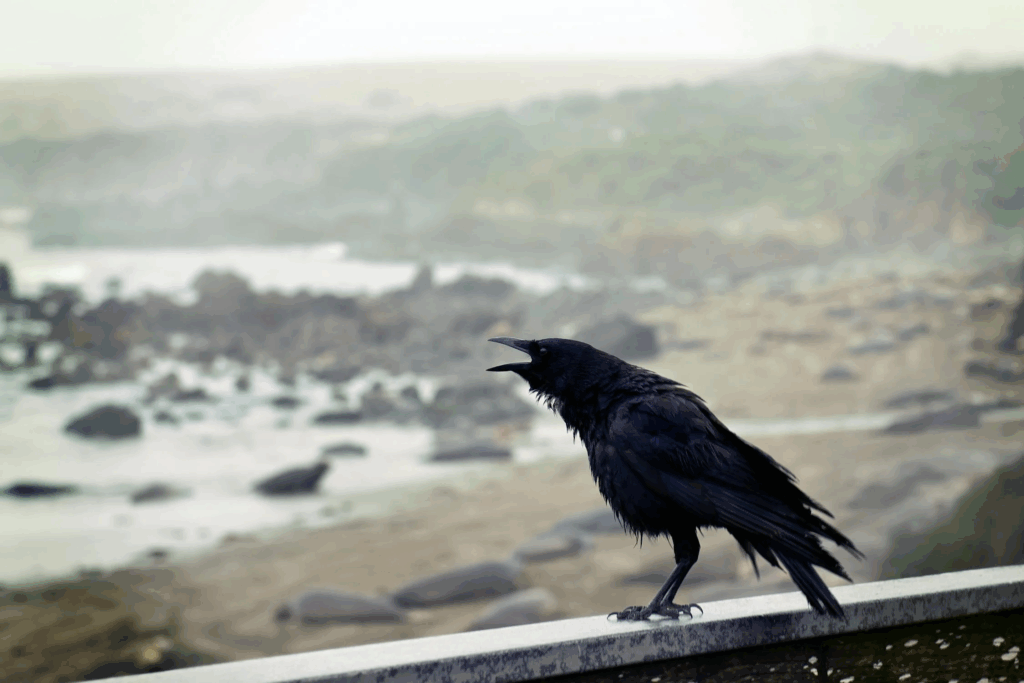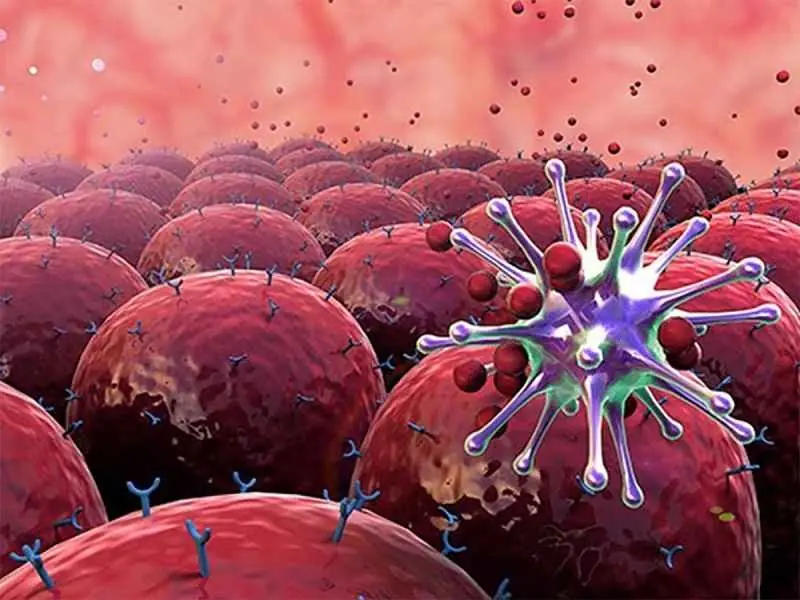
Researchers Discover Crows Hold ‘Funerals’ To Mourn Their Dead
Human beliefs about death and the afterlife have frequently included crows, who have long been fascinating and mysterious animals. Collectively referred to as a “murder of crows,” these birds have sparked uncanny assemblages and stories of ominous gatherings. However, contemporary scientific studies show that their attitudes towards death are significantly more nuanced, sophisticated, and survival-based than superstition. This essay explores the fascinating realm of crow “funerals”, revealing the true meaning of these events, their scientific basis, and the extraordinary cognitive capacities that underlie these behaviours.
The Myth and Reality of Crow Funerals
Crows gathering around a deceased friend has long been a common folklore image, frequently regarded as a dismal council determining the corpse’s fate. The reality is based on sensible and adaptable behaviour, even though this poetic concept piques the imagination. Other crows frequently congregate close to a deceased crow’s body, but this is not done for human mourning. Rather, these meetings function as a means of group inquiry and information exchange.
This behaviour is categorised under the scientific discipline of corvid thanatology, which blends the study of death and its associated rituals with the study of corvid birds, such as crows, ravens, magpies, and jays. Given their reputation for intellect, corvids’ reactions to death demonstrate a deep comprehension of danger and social dynamics.
What Happens During a Crow Funeral?
A crow will frequently make loud scolding noises or warning calls when it sees a dead member of its kind. These crow calls serve as signals that draw additional crows to the area, creating what is frequently called a “mob.” The crows will jointly vocalise and examine the dead bird for 15 to 20 minutes during this mobbing behaviour.
Crow funerals are practical in contrast to human funerals, which are mostly ceremonial and sentimental. These meetings are used by the birds to evaluate any dangers in their surroundings. Crows can identify predators or hazards they should stay away from by looking at the circumstances surrounding the death. By learning and adapting, the group’s chances of surviving are increased through this exploratory process.
Cognitive Insights: What’s Happening in the Crow Brain?
Scientists can now see into the crow’s brain to learn how these birds react to death thanks to recent developments in neuroimaging. Researchers used a method known as fluorodeoxyglucose positron emission tomography, or FDG-PET, to examine how the brain activity of crows exposed to deceased conspecifics differed from that of crows exposed to control stimuli, like dead songbirds.
The results were startling. The crows displayed higher activity in the nidopallium caudolaterale (NCL), rather than areas of the brain linked to fear or social emotions, such as the amygdala, which controls emotional reactions in mammals. This region, which is in charge of complex cognitive processing and higher-order decision-making, is thought to be the avian counterpart of the human prefrontal cortex.
This implies that crows approach death with analytical reasoning rather than with natural fear or mourning, assessing the circumstances to guide future actions. As the crow considers the ramifications of the death, the executive centre of their brain illuminates, confirming their status as one of the most intelligent bird species.
Social Learning and Threat Recognition
Crows actively learn from mortality rather than passively responding to it. Researchers carried taxidermied dead crows close to feeding locations while wearing masks in an intriguing investigation. The local crows responded with alarm calls and mobbing behaviour as soon as they recognised certain masked faces as dangerous. Interestingly, even after the disguised persons stopped carrying dead birds, this recognition lasted for as long as six weeks.
Crows utilise death-related cues to navigate their surroundings, as evidenced by their long-term memory and social learning. They keep in mind and steer clear of dangers, adjust their conduct accordingly, and alert others in their society. Their sophisticated social intelligence is demonstrated by their capacity to understand and discuss risk.

Unusual and Controversial Behaviors Observed
Certain behaviours can appear strange or unnerving, even though the majority of crow funerals involve vocalisations and careful examination. Crows have been shown to touch, peck, or even copulate with deceased conspecifics, according to research. Despite being uncommon, these behaviours have been seen in carefully monitored research and recorded over a number of years.
Scientists warn against overinterpreting such behaviours, even though they may seem gruesome to human viewers. Confusion during the breeding season, misidentification, or increased arousal brought on by the presence of a dead bird could all contribute to these interactions. A crow may occasionally approach a corpse while yelling an alarm, copulate, and then be joined in a frenzied state by its partner before shredding the body to pieces.
Despite being out of the ordinary, these behaviours show how complicated and perhaps contradictory crow behaviour is when it comes to death. Researchers stress that these are anomalies rather than the norm and that crow funerals’ principal purposes are still threat assessment and information collecting.
The Role of Communication in Crow Funerals
Crows are very talkative birds that utilise a wide variety of cries to express various ideas. Alarm calls are used at funerals to draw more people to the area and warn of possible danger. The NCL is stimulated by both warning cries and other social vocalisations, such as begging calls, according to studies comparing brain reactions to these sounds. This suggests that deciphering crow communication involves a substantial amount of cognitive work.
This intricacy implies that crow communication is subtle and context-dependent. To react correctly to dangers, food possibilities, or social interactions, the birds must decipher minute variations in sounds. Funeral parties offer an environment where these exchanges are intensified and vital to the survival of the group.
Broader Implications: What Crow Funerals Tell Us About Animal Intelligence
Crow funerals provide important insights about the social behaviour and cognitive processes of animals. These birds show that rather than only being a source of dread or avoidance, death can also serve as a spur for education and group action. Their capacity to recall faces, link particular people to danger, and conduct group research suggests a level of intelligence that defies conventional theories of animal behaviour.
Furthermore, crows’ employment of higher-order brain functions in response to mortality points to a level of awareness and problem-solving that is rarely found in non-human animals. Although it is yet unknown if crows feel human-like grief or empathy, their behaviour shows a sophisticated approach to social cohesiveness and risk management.
News in the same category


The Growing Threat of Space Debris: Managing Earth’s Crowded Orbit

New interstellar comet 3I/ATLAS is hurtling through the solar system — and you can watch it live online today

HealthScientists Detect Microplastics In Reproductive Fluids—Potential Infertility Risk

Ancient Inscriptions Inside Great Pyramid Rewrite History Of Its Builders

Once ‘Dead’ Thrusters On The Farthest Spacecraft From Earth That’s 16 Billion Miles Away Are Working Again

OpenAI’s Top Al Model Ignores Explicit Shutdown Orders, Actively Rewrites Scripts to Keep Running

Google Earth Unveils Shocking 37-Year Transformation Of Our Planet

Marine Animal Shows Are Officially Banned in Mexico After Historic Legislative Vote

Denmark Pays Students $1,000 Monthly to Attend University, With No Tution Fees

Protect Your Home and Wallet: Unplug These 5 Appliances When You’re Done Using Them

Some People Still Think These Two Buttons Are Only For Flushing

The Dark Year: What Made 536 So Devastating For Civilization

Elon Musk Claims He’s A 3,000-Year-Old Time-Traveling Alien

The Volume Buttons on Your iPhone Have Countless Hidden Features

10 Safest Countries To Be In If World War 3 Breaks Out

2050 Climate Crisis Death Toll Could Be Catastrophic, Researchers Warn

This Image Has People Perplexed. Can You Solve It?

What causes the green ring around hard-boiled eggs?
News Post

Experts Issue Dire Warning: Gulf Stream Shutdown May Be Just Decades Away—With Catastrophic Global Fallout

The Growing Threat of Space Debris: Managing Earth’s Crowded Orbit

Doctor’s Warning: Early-Stage Lung Cancer Doesn’t Always Include a Cough – Watch for These 4 Unusual Signs

5 Early Signs of Diabetes That Many People Often Overlook

To Prevent Stroke, Remember the ‘3 Don'ts’ After Meals and the ‘4 Don'ts’ Before Bed — Stay Safe at Any Age

Banana Blossom: The Natural Medicine Everyone Overlooks

Scientists Warn: Most Infectious Covid Strain Yet Is Now Dominating

Say Goodbye to Anemia, Cleanse Fatty Liver, and Restore Vision in Just 7 Days With This Powerful Natural Remedy

Bloated Stomach: 8 Common Reasons and How to Treat Them (Evidence-Based)

Foamy Urine: Why You Have Bubbles in Your Pee and When to Worry

What Causes Belly Fat: Foods to Avoid and Other Key Factors

Notice These 4 Unusual Signs Before Sleep? Be Careful – They May Signal a Risk of Stroke

5-Year-Old Girl Diagnosed With Terminal Cancer: A Wake-Up Call for All Parents

Good News: Successful Trial of Method That Destroys 99% of Cancer Cells

New interstellar comet 3I/ATLAS is hurtling through the solar system — and you can watch it live online today

HealthScientists Detect Microplastics In Reproductive Fluids—Potential Infertility Risk

Ancient Inscriptions Inside Great Pyramid Rewrite History Of Its Builders

Once ‘Dead’ Thrusters On The Farthest Spacecraft From Earth That’s 16 Billion Miles Away Are Working Again

OpenAI’s Top Al Model Ignores Explicit Shutdown Orders, Actively Rewrites Scripts to Keep Running
